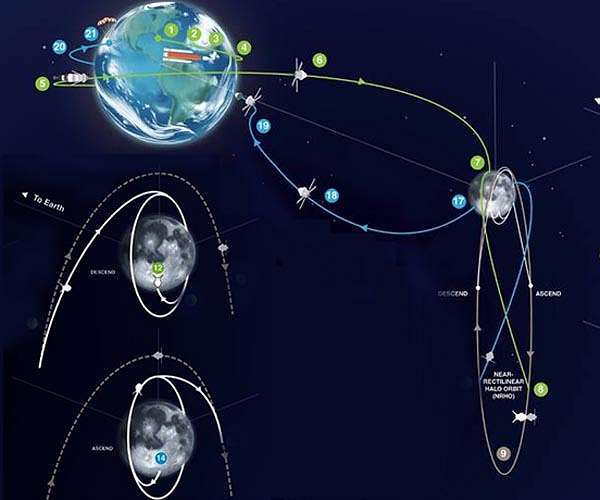Artemis III will be humanity's return to the lunar surface and NASA will make history by sending the first humans to the lunar South Pole region.
Humans have always been drawn to explore, discover, and learn as much as we can about the world-and worlds-around us. This isn't always easy, but it's in our nature. For the benefit of all humanity, NASA and its partners will land the first woman and first person of color on the surface of the Moon with Artemis.
Following two Artemis test missions, Artemis III, currently planned for 2025, will mark humanity's first return to the lunar surface in more than 50 years. NASA will make history by sending the first humans to explore the region near the lunar South Pole.
First the crew will launch to Earth orbit where they will perform systems checks and solar panel adjustments on Orion. Then, a powerful push from SLS's interim cryogenic propulsion stage will help Orion perform a translunar injection maneuver, setting its course to the Moon.
For several days, the crew will travel toward the Moon and perform corrective engine burns to intercept the Moon's gravitational field. At the right time and location, Orion will perform a series of two engine burns to place the spacecraft in a lunar Near-Rectilinear Halo Orbit (NRHO).
From hundreds of potential orbits, NASA selected NRHO to achieve long-term Artemis goals. NRHO will provide near-constant communications with Earth and access to sites all over the Moon. Because it is gravitationally balanced between Earth and the Moon, this orbit will maximize fuel efficiency. On future missions, NASA and its partners will assemble the Gateway lunar space station in NRHO to serve as a hub for Artemis missions.
NASA has selected SpaceX to provide the human landing system that will transport Artemis III astronauts from Orion in lunar orbit to the surface of the Moon and back again. SpaceX plans to use a unique concept of operations to increase the overall efficiency of their lander.
After a series of tests, SpaceX will fly at least one uncrewed demo mission that lands Starship on the lunar surface. When Starship has met all of NASA's requirements and high standards for crew safety, it will be ready for its first Artemis mission.
Before the crew launch, SpaceX will launch a storage depot to Earth orbit. A series of reusable tankers will carry propellant to the storage depot to fuel the human landing system. The uncrewed Starship human landing system will then launch to Earth orbit and rendezvous with the storage depot to fill its tanks before executing a translunar injection engine burn and traveling approximately six days to NRHO where it will await the Artemis III crew.
When both spacecraft have arrived in NRHO, Orion will dock with the Starship human landing system in preparation for the first lunar surface expedition of the 21st century. Once the crew and their supplies are ready, two astronauts will board Starship and two will remain in Orion.
Orion will undock and back away from Starship to remain in NRHO for roughly one orbit around the Moon, lasting about 6.5 days. This will match the length of the surface expedition, so as Orion completes its orbit, the two person surface crew will finish their work on the surface in time to launch back up to meet the spacecraft.
NASA has its sights set on locations around the South Pole for the Artemis era of human lunar exploration. Extreme, contrasting conditions make it a challenging location for Earthlings to land, live, and work, but the region's unique characteristics hold promise for unprecedented deep space scientific discoveries. Using advanced technology including autonomous systems, the crew inside of Starship will land at a carefully selected site within a 100-meter radius.
During their time on the Moon, the astronauts will do scientific work inside Starship and conduct a series of moonwalks, exiting Starship to explore the surface. The astronauts will don advanced spacesuits, exit through an airlock, and descend on Starship's elevator. NASA has selected Axiom Space to provide the Artemis III surface suits and spacewalk systems. These suits will give the astronauts increased range of motion and flexibility to explore more of the landscape than on previous lunar missions.
During their moonwalks, the astronauts will take pictures and video, survey geology, retrieve samples, and collect other data to meet specific scientific objectives. The view from the lunar South Pole region will look very different from the photos taken on Apollo missions in the Moon's equatorial region.
The Sun will hover just above the horizon, casting long, dark shadows across the terrain, which the crew will explore using headlamps and navigational tools. The information and materials collected by Artemis III astronauts will increase our understanding of the mysterious South Pole region, the Moon, and our solar system.
Mission control teams on the ground will be in contact with the crew as they relay what they see, hear, and feel. Through mission coverage and the ability to send high quality images and video to the ground with advanced communication technology, they will be sharing a unique new human experience with the world.
When they reach the optimal NRHO departure point, with all four astronauts back in Orion, they will undock and ignite Orion's engines, slinging the spacecraft past the Moon, and allowing it to coast toward Earth. The crew will travel about 24,855 miles (about 40,000 kilometers) per hour during reentry into Earth's atmosphere. Assisted by 11 parachutes, the spacecraft will splash down in the Pacific Ocean where it and the crew will be retrieved with support from the U.S. Coast Guard and U.S. Navy.
Artemis III will be one of the most complex undertakings of engineering and human ingenuity in the history of deep space exploration to date. The astronauts' observations, samples, and data collected will expand our understanding of our solar system and home planet, while inspiring the next generation.
This mission will usher in a future in which humans consistently access the Moon, and human planetary exploration missions are within reach. Each Artemis mission will increase our knowledge, refine our operations, and prove our technology as we prepare for the first human mission to Mars.
The early-stage mission hooks into NASA's Artemis program.
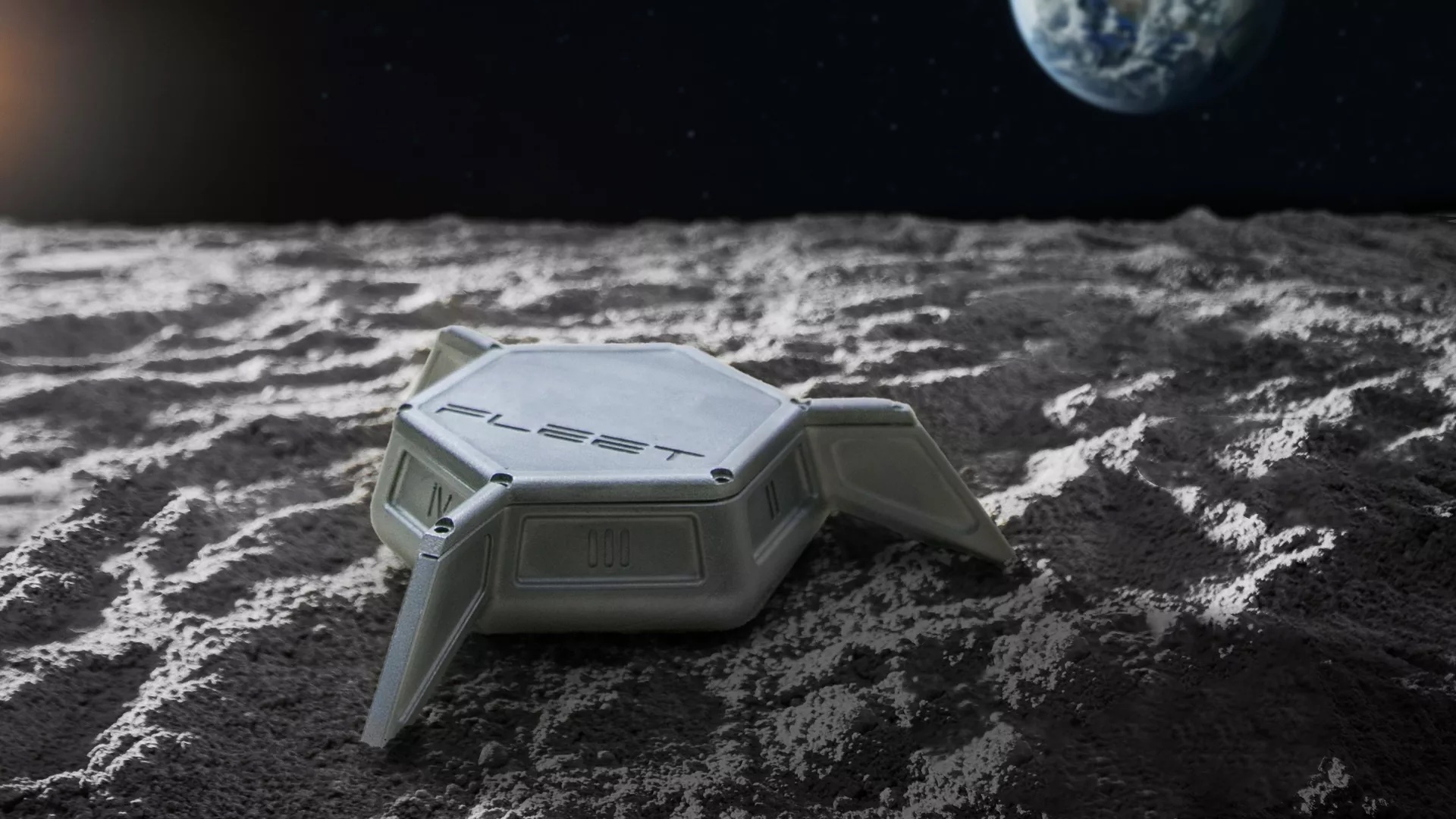
A rendering of Fleet Space's SPIDER, a three-component seismic station set to be deployed at the moon's south pole. (Image credit: Fleet Space Technologies)
A spider web-like network of earthquake stations is aiming for the moon.
Australian company Fleet Space received funding to develop its Seismic Payload for Interplanetary Discovery, Exploration and Research, or SPIDER, to detect seismic quakes on the moon in the future. The early-stage $4 million AUS ($2.65 million USD) contract is not for an imminent landing mission, but for technology development. The eventual goal is to bring a trio of seismic monitors to the moon for one lunar "day" (14 days on Earth) to help locate valuable resources below the lunar surface.
SPIDER aims to record moonquakes continuously for up to 14 days and will launch "aboard a commercial lander" that has not been selected yet. The test of compact geophysical equipment will be useful not only for the moon, but also for remote environments on Earth or Mars "We are explorers with a mission to revolutionize mineral exploration from Earth to the moon and Mars," the company wrote in a statement.
Fleet Space CEO Matthew Pearson stated that the Australian Space Agency funding will be key to helping his country support the NASA-led Artemis Accordsmoon program.
"We are poised to be the first Australian technology to touch down on the surface of the moon, supporting humanity's efforts towards [lunar exploration] and aligning with NASA's Artemis program, with a future vision of Martian exploration supporting the hunt for life beyond our planet," Pearson said in a statement.
Australia was one of the first signatories of the Artemis Accords, a NASA framework for moon exploration as well as an effort to establish international peaceful norms for space exploration. (The addition of India and Ecuador in recent weeks brought the number of participating nations to 27.)
NASA aims to bring humans to the moon's south pole in 2025 or 2026 with the Artemis 3 mission, and has funded numerous robotic payloads under its Commercial Lunar Payload Services program that may see its first mission touch down as soon as this year. The moon-circling Artemis 2 has a crew in training, and a launch date of November 2024.
Fleet is funded under the Australian government's $40 million AUS ($26.45 million USD) "moon to Mars initiative" aiming to help countries get ready for moon exploration. It's similar to NASA's CLPS or Canada's Lunar Exploration Accelerator Program (LEAP), to name a couple of Artemis signatories.
Other recent news by Fleet includes raising $50 million AUS ($33 million USD) in a Series C fundraising round, building out an ExoSphere set of satellites to scan for minerals in Earth orbit, and signing with Australia's Defense Space Command for a demonstrator satellite communications system.
The first lunar seismometers were deployed by the Apollo programastronauts between 1969 and 1972 during several of the program's six successful landing missions. All remaining functional seismometers were turned off in 1977 to save money, despite having a modest yearly cost of $1 million ($5 million in 2023 dollars), according to the New York Times.
Quelle: SC
----
Update: 28.08.2023
.
NASA selects geology team for the first crewed Artemis landing
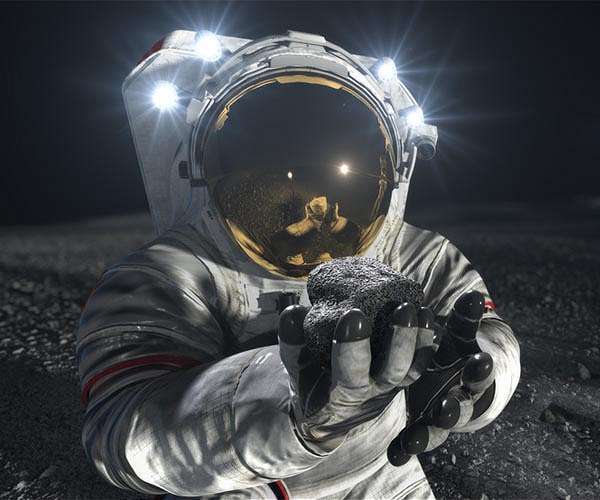
NASA has selected the geology team that will develop the surface science plan for the first crewed lunar landing mission in more than 50 years. NASA's Artemis III mission will land astronauts, including the first woman to land on the Moon, near the lunar South Pole to advance scientific discovery and pave the way for long-term lunar exploration.
"Science is one of the pillars of Artemis," said Dr. Nicky Fox, NASA Science Associate Administrator. "This team will be responsible for leading the geology planning for humanity's first return to the lunar surface in more than 50 years, ensuring that we maximize the science return of Artemis and grow in our understanding of our nearest celestial neighbor."
The Artemis III Geology Team, led by principal investigator Dr. Brett Denevi of the Johns Hopkins University Applied Physics Laboratory in Laurel, Maryland, will work with the agency to determine the mission's geological science objectives and design the geology surface campaign that the Artemis astronauts will carry out on the Moon during this historic mission. These objectives will be defined in accordance with the established Artemis science priorities.
"Selecting this team marks an important step in our efforts to optimize the science return of Artemis III. This team of well-respected lunar scientists has demonstrated experience with science operations, sample analysis, and operational flexibility, all of which is critical for the successful incorporation of science during Artemis III," said Dr. Joel Kearns, deputy associate administrator for exploration in NASA's Science Mission Directorate at NASA Headquarters in Washington.
"With the establishment of the Artemis III Geology Team, we are ensuring that NASA will build a strong lunar science program."
The other co-investigators on the Artemis III Geology Team are:
Dr. Lauren Edgar (deputy principal investigator), U.S. Geological Survey in Reston, Virginia
Dr. Bradley Jolliff, Washington University in St. Louis, Missouri
Dr. Caleb Fassett, Johns Hopkins University
Dr. Dana Hurley, Johns Hopkins University
Dr. Gordon Osinski, University of Western Ontario in London
Dr. Jennifer Heldmann, NASA's Ames Research Center in Silicon Valley, California
Dr. Jose Hurtado, University of Texas at El Paso
Dr. Juliane Gross, Rutgers University in New Brunswick, New Jersey
Dr. Katherine Joy, University of Manchester in the United Kingdom
Dr. Mark Robinson, Arizona State University in Tempe
Dr. Yang Liu, NASA's Jet Propulsion Laboratory in Southern California
The Geology Team's focus will be to plan the Artemis III astronauts' science activities during their moonwalks, which will include field geology traverses, observations, and the collection of lunar samples, imagery, and scientific measurements. The team will also support the real-time documentation and initial assessment of scientific data during astronaut lunar operations. Members will then evaluate the data returned by the mission, including preliminary examination and cataloguing of the first lunar samples collected by NASA since 1972.
"The Artemis III Geology Team will have the unique opportunity to analyze the first-ever samples from the lunar south pole region, helping us not only to unlock new information about the formation of our Solar System, but also with planning for future Artemis missions and establishing a long-term lunar presence," said Jim Free, Associate Administrator for NASA's Exploration Systems Mission Directorate.
The collection of samples and data from this region, which contains some of the oldest parts of the Moon, estimated to be at least 3.85 billion years old, will help scientists better understand fundamental planetary processes that operate across the solar system and beyond.
The resulting analysis from the geology team's activities could also help yield important information about the depth, distribution, and composition of ice at the Moon's South Pole. This information is valuable from both a scientific and a resource perspective because oxygen and hydrogen can be extracted from lunar ice to be used for life support systems and fuel.
The team, which was chosen through a dual-anonymous peer review process, will have a budget of $5.1 million to lead the geology for Artemis III.
The members of this geology team are part of the broader Artemis Science Team and will work in coordination with Artemis III Project Scientist, Dr. Noah Petro, and the NASA Artemis Internal Science Team, as well as participating scientists, and deployed payload teams that will be selected from future or ongoing competitive solicitations.
Through Artemis, NASA will land the first woman and first person of color on the Moon, establishing a long-term, sustainable lunar presence to explore more of the lunar surface than ever before and prepare for future astronaut missions to Mars.
Quelle: SD
----
Update: 3.09.2023
.
Ontario professor part of NASA’s geology team for Artemis III moon mission
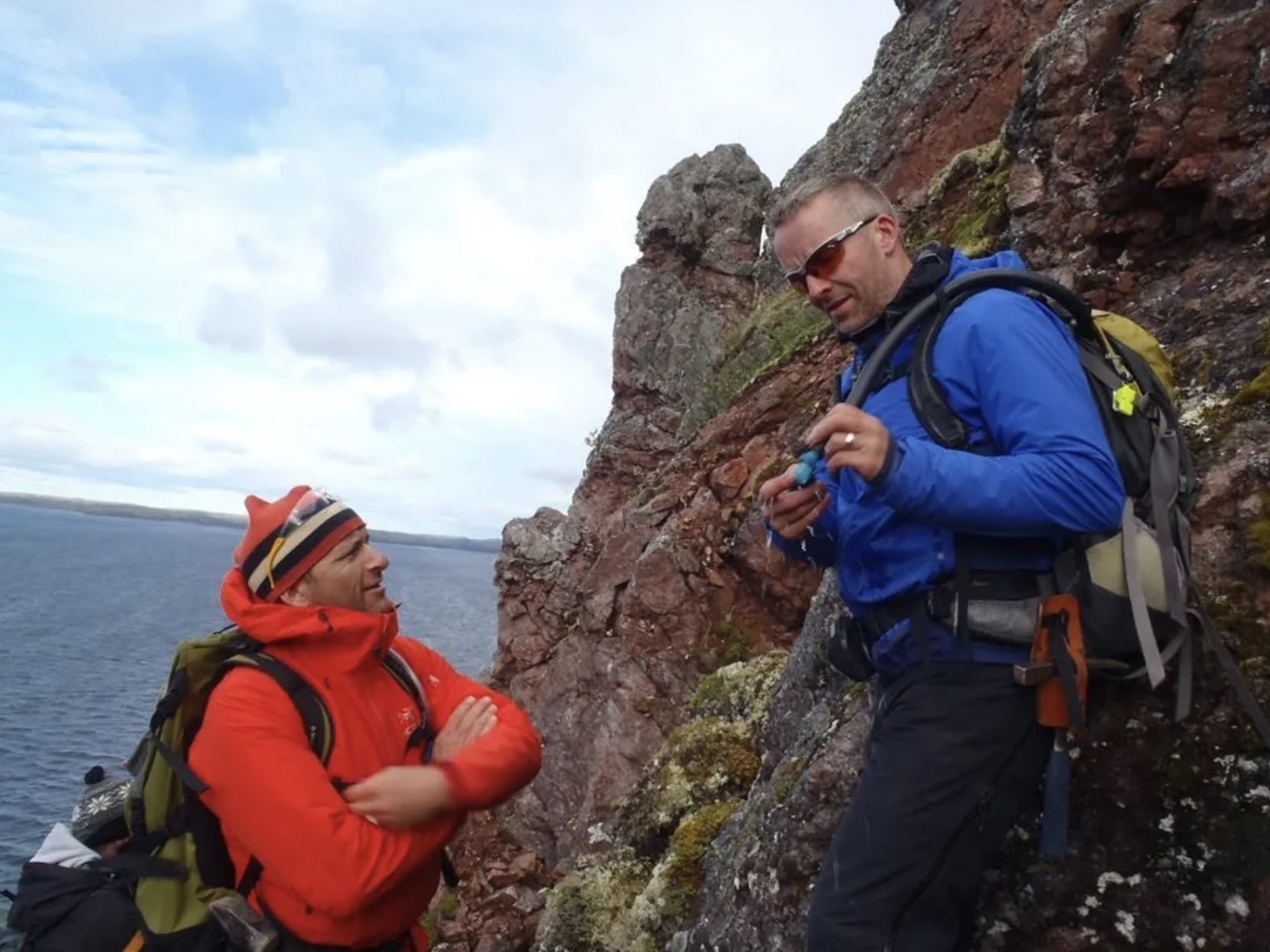
CSA astronaut David Saint-Jacques, left, and Dr. Gordon Osinski are shown on a field training expedition at West Clearwater Lake in northern Quebec in this 2014 handout photo. In a milestone moment for Canadian space science, planetary geologist Gordon “Oz” Osinski is hoping to "make Canada proud" after his appointment to a NASA team that will train the first person to walk on the moon in over 50 years. THE CANADIAN PRESS/HO - Gordon Osinski.
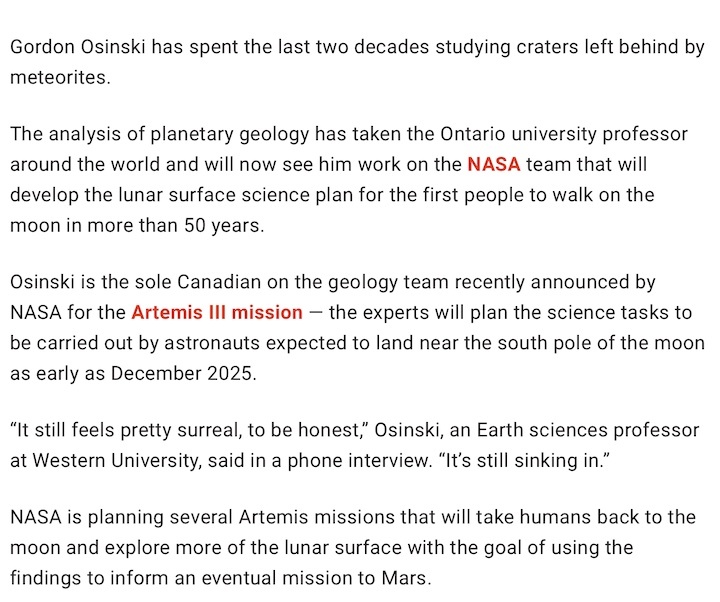
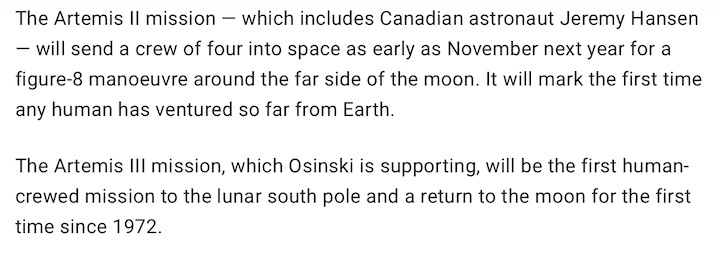
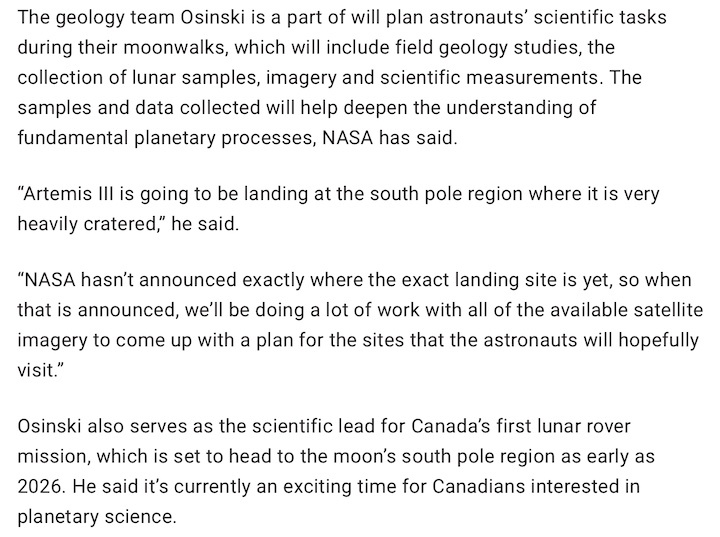
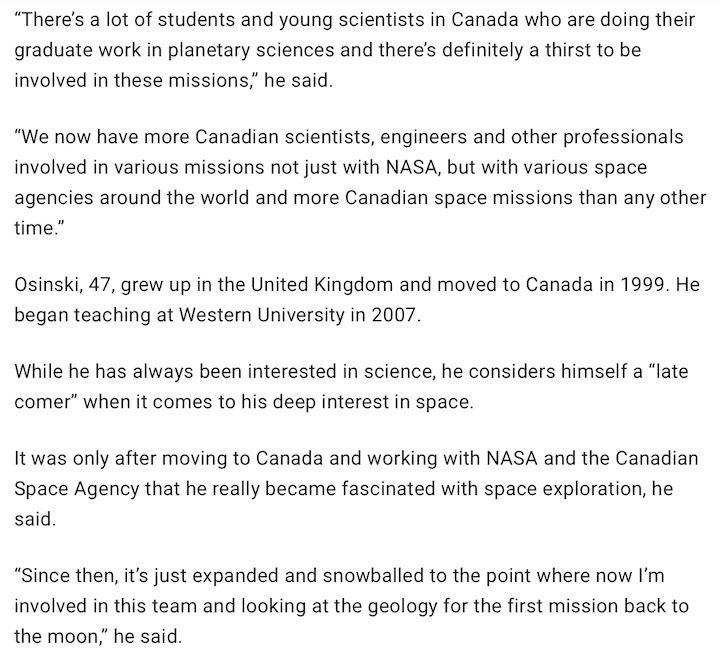

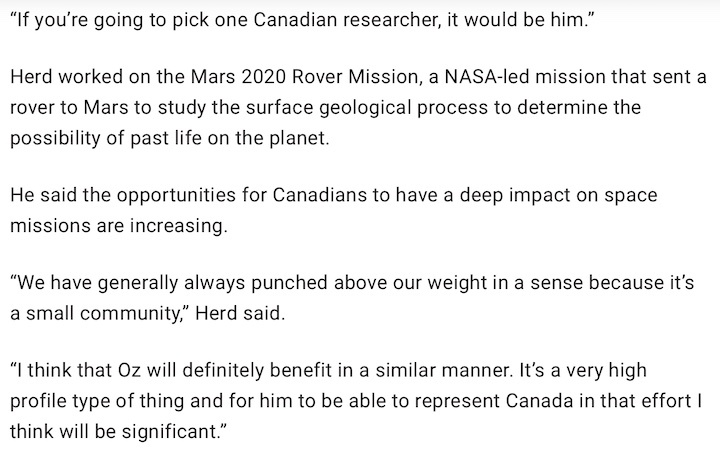
Quelle: Global News
----
Update: 6.09.2023
.
Australia launching moon rover on NASA Artemis mission as soon as 2026
And you can take a crack at naming the spacecraft — if you're an Australian resident.

Artist's illustration of Australia's first moon rover on the lunar surface. (Image credit: Australian Space Agency)
Australia will send a rover to the moon for the first time just a few short years from now, if all goes according to plan.
The nation will put a robotic rover on one of NASA's Artemis moon missions, with liftoff occurring as soon as 2026, according to the Australian Space Agency.
"Drawing on Australia's world-leading remote operations expertise, the rover will collect lunar soil, known as regolith," the agency wrote in a statement on Tuesday (Sept. 5). "NASA will attempt to extract oxygen from the sample. This is a key step towards a sustainable human presence on the moon."
The rover does not yet have a name, but the Australian Space Agency is working on that. The agency just launched a competition to hang a moniker on the pioneering robot, and you can participate — if you're an Australian resident.
You have until Oct. 20 to submit your entry. The Australian Space Agency will select its four favorites from the public offerings, then submit the shortlist to a public vote. The winner will be announced in early December.
NASA is working to establish a permanent, sustainable human presence on and around the moon by the end of the 2020s via the Artemis program. The skills and knowledge learned in doing so will enable humanity's next giant leap, a crewed mission to Mars, NASA officials say.
NASA has launched one Artemis mission to date — Artemis 1, which sent an uncrewed Orion spacecraft to lunar orbit and back late last year. The agency is gearing up to send four astronauts around the moon on Artemis 2, which is scheduled to lift off in late 2024.
The next mission after that, Artemis 3, will put boots down near the lunar south pole in late 2025 or 2026, if all goes according to plan.
NASA is leveraging a variety of commercial and international partnerships to achieve Artemis' ambitious goals, as the inclusion of the Australian rover on an upcoming mission shows. In addition, the European Space Agency provides Orion's service module, and SpaceX's next-generation Starship vehicle will be the program's first crewed lunar lander.
Quelle: SC
----
Update: 6.12.2023
.
NASA Continues Progress on Artemis III Rocket Adapter with Key Joint Installation

NASA/Sam Lott
Engineers and technicians at NASA’s Marshall Space Flight Center in Huntsville, Alabama, recently installed a key component called the frangible joint assembly onto the adapter that connects the core stage to the upper part of the NASA’s SLS (Space Launch System) rocket. The cone-shaped stage adapter, called the launch vehicle stage adapter, will be part of the SLS mega rocket that will power NASA’s Artemis III mission to the Moon. The frangible joint sits atop the adapter and operates as a separation mechanism. The frangible joint is designed to break apart upon command, allowing the upper part of the rocket, NASA’s Orion spacecraft, and the crew inside Orion to quickly separate from the SLS core stage and adapter. Frangible joint assemblies are widely used across the space industry in a variety of crewed and uncrewed spacecraft to efficiently separate fairings or stages during launch, during ascent, in orbit and during payload deployment. The stage adapter used for Artemis III is set to be the last of its kind as SLS evolves into a larger and more powerful configuration for future Artemis missions, beginning with Artemis IV. The adapter is fully assembled at Marshall by NASA and lead contractor Teledyne Brown, which is also based in Huntsville.
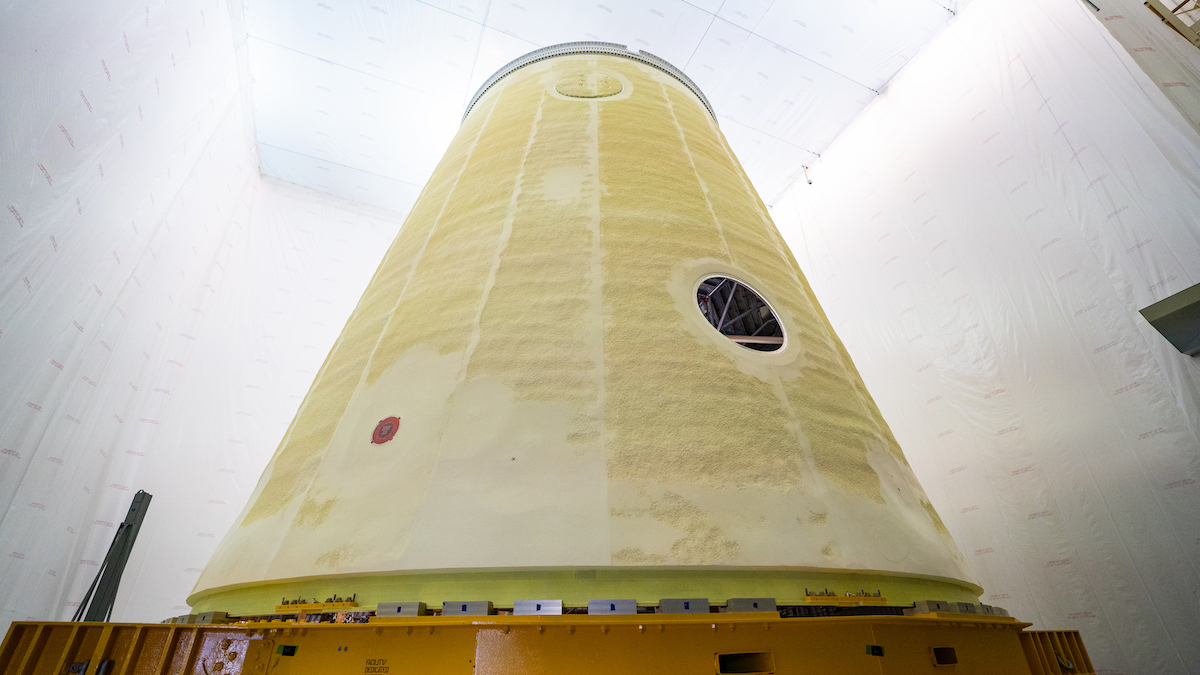
SLS is part of NASA’s backbone for deep space exploration, along with Orion and the Gateway in orbit around the Moon, and commercial human landing systems. SLS is the only rocket that can send Orion, astronauts, and supplies to the Moon in a single launch.
Quelle: NASA
----
Update: 1.04.2024
.
Space Lab® LEAF Experiment Selected for Artemis III Lunar Mission
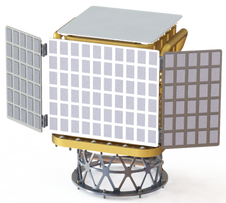
LEAF β Payload Concept
Space Lab® announced that the company has been selected to develop LEAF, a plant science experiment for NASA’s Artemis III Lunar mission. Artemis III will bring humans to the surface of the moon for the first time in this century. The Artemis III Deployed Instruments (A3DI) call solicited instrument suites to conduct high-priority science investigations that can be uniquely accomplished by human deployment of payloads on the surface of the Moon. LEAF, which stands for Lunar Effects on Agricultural Flora, will study how the Lunar environment affects the germination and growth of plants that may be used to feed astronauts of the future. Human nutrition and life support (carbon dioxide removal, oxygen production, and water purification) provided by space agriculture will enable long-duration human exploration of the moon and beyond. Plant biology research on the Lunar surface is needed to understand the effects of partial gravity and space radiation on crop physiology and to demonstrate the potential for sustained, off-planet propagation.

The LEAF β (“LEAF Beta”) payload will protect plants within from excessive Lunar sunlight, radiation, and the vacuum of space, while observing their photosynthesis, growth, and responses to stress. The experiment includes a plant growth chamber with an isolated atmosphere, housing red and green varieties of Brassica rapa (Wisconsin Fast Plants®), Wolffia (duckweed), and Arabidopsis thaliana. By bringing seedling samples back to Earth, as part of Artemis III, the research team will apply advanced system biology tools to study physiological responses at a molecular level. Only one other payload has studied plants on the moon; the 2019 Chinese Chang’e 4 mission provided a picture of a 4-day old cotton sprout then suffered thermal control failure. The Lunar Effects on Agricultural Flora (LEAF) research will provide the first, comprehensive assessment of organism-wide effects of the Lunar environment, reducing risks for sustainable off-planet crop production and bioregenerative life support. Space Lab Vice President, Christine Escobar, stated “This research will be a pivotal step toward understanding how we might use agriculture in space to support human crew, paving the way for sustained Lunar exploration and even missions to Mars.”
The LEAF team includes Principal Investigator Christine Escobar, Space Lab CEO Adam Escobar, Space Lab Mechanical Engineer Madison Jones, and space biologists from NASA Kennedy Space Center (Dr. Aubrie O’Rourke, Dr. Gioia Massa, and Dr. Raymond Wheeler), University of Colorado at Boulder (Dr. Barbara Demmig-Adams), Purdue University (Dr. Marshall Porterfield), USDA (Dr. Gayle Volk), La Trobe University (Dr. Mathew Lewsey), and University of Adelaide (Dr. Jenny Mortimer).
Space Lab is a small business in Boulder, CO, that researches and develops technology for Earth-independent space habitation and exploration. Escobar stated, “We create tools and resources that people need to live and work in space sustainably, so that they can explore further and stay longer. We consider ourselves space habitat outfitters, developing sustainable solutions for humanity’s greatest journey.”
Quelle: Space Lab Technologies, LLC
----
Update: 12.02.2025
.
Risks with current Artemis 3 moon landing plan 'may be too high,' NASA safety group says
Oh, the uncertainties...
An annual safety report to NASA has both praise for the agency and also underscores a number of cautionary woes, including the space agency’s undertaking of the Artemis back-to-the-moon with humans campaign.
The annual report from the Aerospace Safety Advisory Panel (ASAP) has been released. The report observes that NASA has made impressive progress. Challenges remain, however, and are highlighted in this report.
Of note, this report points to significant safety observations for both the agency's Moon to Mars Program and the current International Space Station operations in low-Earth orbit.
The ASAP of experts, led by former NASA astronaut Lieutenant General Susan J. Helms, USAF (Ret.) who chairs the group, notes that there are "considerable risk-related issues" surrounding NASA's planned transition to Commercial low-Earth orbit destinations, "some of which are not wholly within NASA's control."
The just-released ASAP report also touches on relevant areas of human health and medicine in space "and the impact of budget constraints and uncertainty on safety."
The new report has been sent to Janet Petro, NASA Acting Administrator, as well as J.D. Vance, Vice President and President of the Senate and Mike Johnson, the Speaker of the U.S. House of Representatives.
Congress established the ASAP or "Panel" in 1968 to provide advice and make recommendations to the NASA Administrator and Congress on safety matters.
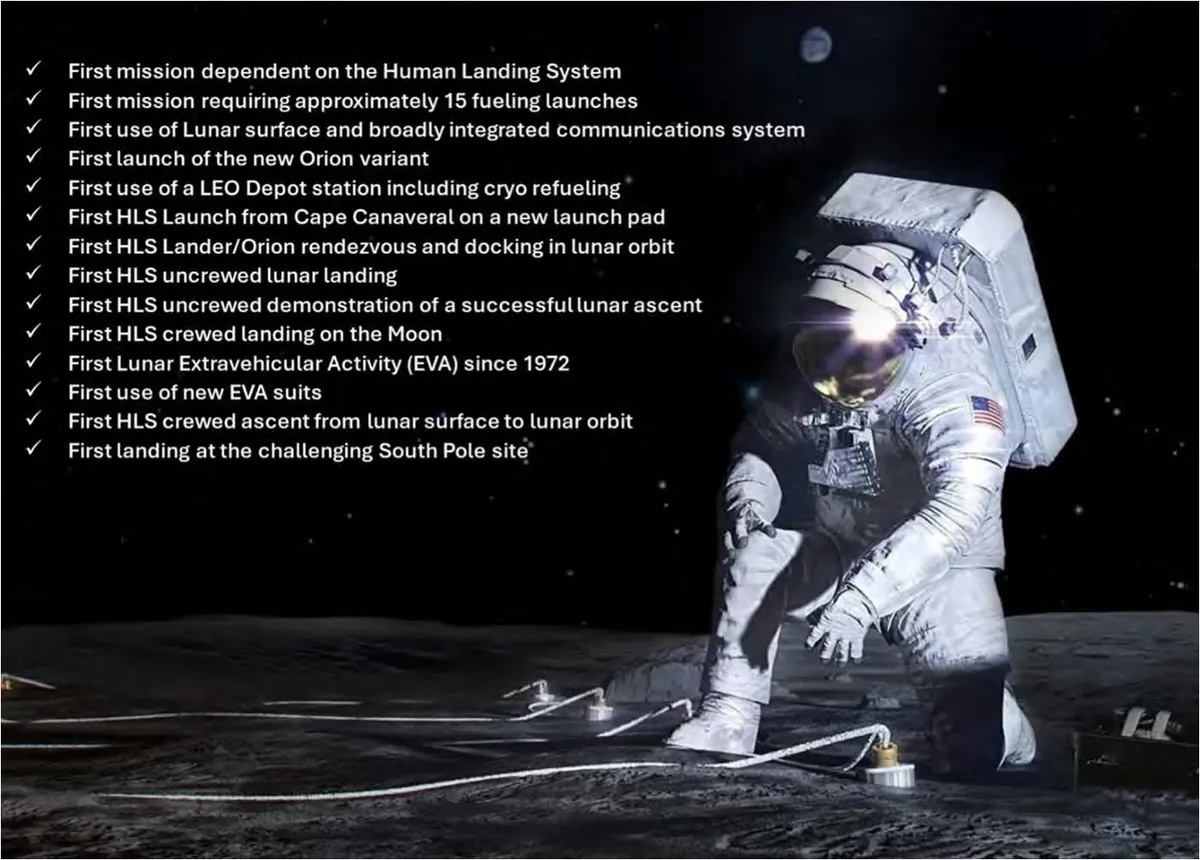
(Image credit: ASAP)
"Of particular concern are the risks surrounding the development, integration, and execution of the Artemis campaign. NASA’s mandate for deep space exploration to Mars and beyond is supremely challenging and fraught with uncertainty," the ASAP report explains.
"A critical steppingstone in the development of human interplanetary travel capabilities and space hardware — and ultimately safe operations and overall mission success — is the safe return to the moon. The moon offers both the opportunity to gain experience operating on a planetary surface and a nearby test bed with an extreme environment akin to Mars,” the report points out.
"Yet, NASA will face a myriad of daunting budgetary, industrial, geopolitical, technical, and health and medical constraints and challenges," the report continues, "as it both executes the Artemis campaign and maintains the Nation’s presence in low-Earth orbit (LEO)."
Physics of failure
The ASAP flagged the fact that, during 2024, the Orion Program continued proactively investigating the heat shield spalling and char loss that occurred during the Dec. 11, 2022 Artemis 1 mission's Orion capsule entry to Earth.
NASA's focus on understanding the physics of the failure and identifying corrective actions, the ASAP report points out, led to corrective actions for future heat shield assemblies, and entry trajectory changes that can enable the 2026 Artemis II to fly with the existing heat shield.
"The ASAP has not yet reviewed the engineering details of this work and the related risk assessments with NASA. This will be a Panel focus early in 2025," the ASAP report says.
Technical readiness level
As for the first human return to the Moon, post-Apollo 17 in 1972, Artemis III is planned as a crewed surface landing and exploration of the lunar south pole region in mid-2027, the Panel "remains very concerned that, on the current schedule and with the current technical readiness level of some segments of the architecture, the Artemis 3 mission is oversubscribed."
As it has in the past, the ASAP views the aggregated risk associated with accomplishing "so many 'first-time' milestones, including several critical prerequisite demonstrations, may be too high," the 2024 report reiterates.
There remain extraordinary challenges for the Artemis “rebooting” of the Moon, such as the delivery of fuel to orbit, cryogenic refueling, and long-duration storage in space; the human landing system (HLS) and Orion mating; and HLS successful descent to and ascent from the lunar surface “are just a sample of critical test objectives that must be successfully demonstrated,” the report says, “to ensure risks are managed appropriately prior to a crewed mission.”
Safety culture
Also spotlighted in the report is the Boeing Starliner crewed flight test (CFT), labeling it as “A Case of Safety Culture.”
“Ultimately, the resolution of the Starliner CFT anomaly demonstrated that, even in the face of unexpected and complex challenges, NASA’s commitment to safety is unshaken,” the report states. “The lessons learned from the past tragedies of Challenger and Columbia continue to influence the Agency’s safety culture today, ensuring that risk management and crew safety are paramount in every decision.
The ASAP adds that, while the Starliner thruster issues received considerable attention, the Panel had previously noted other Starliner issues “that require resolution prior to certification, such as a battery redesign plan and ongoing work to strengthen the landing airbag backing panel to increase operational flexibility,” the report notes.
And, beyond these technical matters, the report continues, “schedule and budget pose substantial challenges to Starliner certification.”
Tempo of SpaceX operations
Tagged as a concern by the ASAP is the tempo of SpaceX operations, given the increased pace of Falcon 9 operations, the addition of U.S. west coast–based Dragon crew hops to space and cargo spacecraft recovery, as well as the contract award of the United States Deorbit Vehicle (USDV) for downing the International Space Station, along with the ongoing large-scale Starshipdevelopment program.
"The ASAP cautions NASA and SpaceX to maintain their intense focus on safe Crew Dragon operations and be alert both to complacency and schedule pressure. NASA and SpaceX must guard against allowing the fast-paced operating environment to interfere with sound judgment, deliberate analysis, and careful implementation of corrective actions," the report states.
Budget uncertainty
An even greater challenge is underscored in the ASAP report – the persistent budget uncertainty stemming from Congress’s failure to provide timely and definitive appropriations.
“This ambiguity significantly hampers NASA’s ability to plan for and execute highly technical missions. Budget uncertainty can escalate risks during development and create operational risks later on. It also diverts attention from critical work, introduces inefficiencies, and delays important decisions that directly impact safety and mission success,” the Panel report says.
“Given the likelihood that Congress will not provide timely budget clarity, NASA must be candid about the consequences of operating within this uncertainty. Congress and other stakeholders must also understand the negative impacts this uncertainty has on NASA’s ability to execute missions safely and effectively.”
Quelle: SC
----
Update: 10.05.2025
.
NASA’s Artemis III Moon Landing Looks to Open Scientific Doors
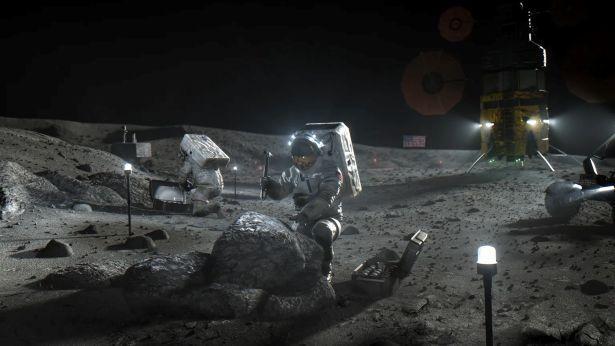
Credit: NASA
HOUSTON–Much of the planned science return from NASA’s Artemis III Moon landing mission with astronauts will be contained in a look at the Solar System’s earliest era.
Astronauts will study the geology at the Moon’s south pole within reach of the South Pole–Aitkin Basin, which at 4.5 billion years is the oldest and deepest known impact basin in the Solar System.
Currently planned for launch in mid-2027, at least two of the yet-to-be-named, four-person Artemis III crewmembers would spend about 6 1/2 days of the 30-day mission at one of nine landing site options. NASA is assessing for those sites a region between 84 degrees south longitude at the Moon and the south pole itself, which are separated by about 180 km (112 mi.).
NASA scientists involved in the mission planning participated in a May 8 presentation to the National Academies of Sciences, Engineering and Medicine (NASEM) to help initiate and inform a NASA-sponsored look ahead at future Artemis mission objectives. The presentation was entitled, “Key Non-Polar Destinations Across the Moon to Address Decadal-level Science Objectives with Human Explorers.”
The presentations were made by Noah Petro and Barbara Cohen, NASA’s Artemis III and IV mission science leads from the Goddard Space Flight Center. They appeared to make it clear that NASA’s goal of establishing a sustainable human presence at the Moon includes far-reaching science objectives from the very start.
“It is a total anchor point for the Earth/Moon system bombardment, which anchors our Solar System’s dynamical history,” Cohen told the 13-member NASEM panel, referring to the Solar System’s early impactful planet-forming process.
“Even when we look out to extrasolar planetary systems to see how material is being exchanged between their suns and their forming planets, we look back at our understanding of how our Solar System exchanged material,” Cohen said. “The South Pole–Aitkin Basin is the cornerstone for that entire history. It’s an amazing place, and we want to maximize that. It’s a really nice niche early in our capability.”
Petro’s detailed focus on the Artemis III mission science pointed to the gathering of samples that could identify the presence of volatiles–substances that transition from liquid or solid states to vapors, including water ice, at low temperatures–and how those processes could vary in sunlit and permanently shadowed regions of the Moon at the South Pole–Aitkin Basin.
Like the Apollo astronauts who walked on the Moon, Artemis crews will be equipped to gather samples from the lunar surface–some ejected by the long-ago impact that created the Aitkin Basin–for return to Earth for preservation and scientific analysis.
“Understanding what is happening at the Moon today is why the Moon is so important to study processes that happened 4.5 billion years ago and understanding ongoing processes,” Petro said.
Like Cohen, Petro stressed that Artemis missions will pursue objectives across a range of scientific fields, from biological and physical sciences to Earth science, heliophysics, astronomy and astrophysics.
The Artemis III science payloads that Petro outlined include the Japan Aerospace Exploration Agency’s lunar dielectric analyzer. It was developed to measure surface properties, including volatiles and how they transition in response to the changes in temperature associated with exposure to sunlight and darkness.
The Lunar Environment Monitoring System will be deployed to monitor seismic activity for about two years after Artemis III departs the Moon.
The Artemis Lunar Laser Retroreflector is a derivative of a similar instrument delivered to the lunar surface earlier this year aboard the Firefly Aerospace Blue Ghost-1 lander. It will use laser beams to generate photons able to provide additional geophysical data about the Moon for perhaps up to five centuries.
The Lunar Effects on Agriculture Flora experiment will seek to understand how the Moon’s low gravity level and other environmental factors affect plant growth.
The Artemis III Orion crew capsule will be equipped to monitor astronauts’ health and physical responses as they become the first humans to leave the Earth for the Moon since the Apollo 17 mission in December 1972.
Quelle: AVIATION WEEK
----
Update: 30.05.2025
.
NASA Marks Milestones for Artemis III Orion Spacecraft at Kennedy
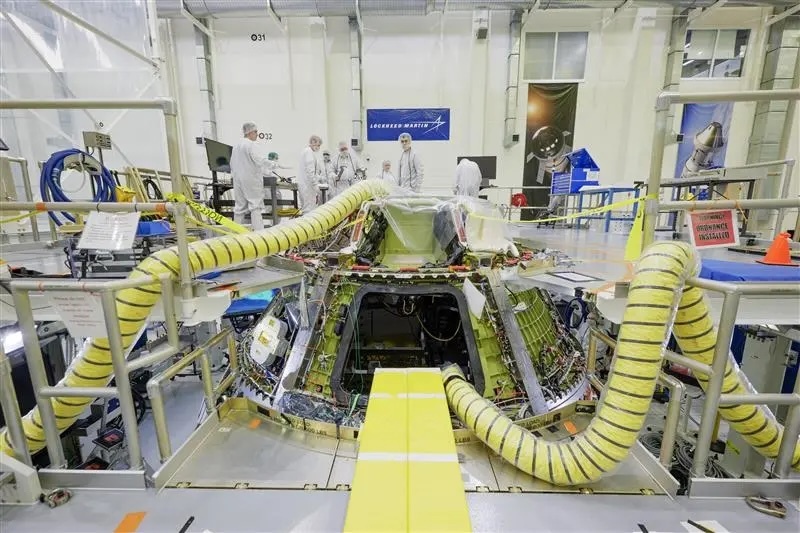
Technicians work on Artemis III Orion crew module on Wednesday, March 5, 2025, at the Neil A. Armstrong Operations and Checkout Building at NASA’s Kennedy Space Center in Florida. Technicians will continue assembling and testing the crew module and service module before integration in 2026.
NASA/Rad Sinyak
NASA continues to make steady progress preparing the spacecraft that will carry astronauts toward the Moon to rendezvous with their lunar lander and bring them back to Earth on Artemis III. Technicians recently powered on the Artemis III Orion crew module for the first time inside the Neil A. Armstrong Operations and Checkout Building at NASA’s Kennedy Space Center in Florida, a key milestone in the work being done to prepare for the next Americans to walk on the Moon.
This initial power on marked the startup of the crew module’s two vehicle management computers and six power and data units, which are responsible for commanding vehicle subsystems. The spacecraft will continue to undergo additional assessments throughout the summer including testing the display units, hand controllers, and audio systems that astronauts will use on their journey to the Moon. Once functional testing is complete, the crew module prop system will undergo proof pressure and leak testing. Proof pressure and leak tests ensure it can safely withstand the rigors of space.
The Artemis III service module, provided by ESA (European Space Agency), is also undergoing testing in the same facility. In May, engineers completed crew module adapter and environmental control and life support systems proof pressure and leak testing. Engineers expect to power on the service module’s avionics systems and controllers in the fall.
Following initial power on of both the Artemis III crew module and service module, technicians will continue assembling the two elements and carry out additional testing, including thermal and acoustic tests, before the modules are connected in 2026.
This work to prepare for Artemis III continues as NASA moves closer to final preparations for Artemis II, the first crewed mission under Artemis, a 10-day journey by four astronauts around the Moon and back. Through Artemis, NASA will send astronauts to explore the Moon for scientific discovery, economic benefits, and build the foundation for the first crewed missions to Mars.
Quelle: NASA
